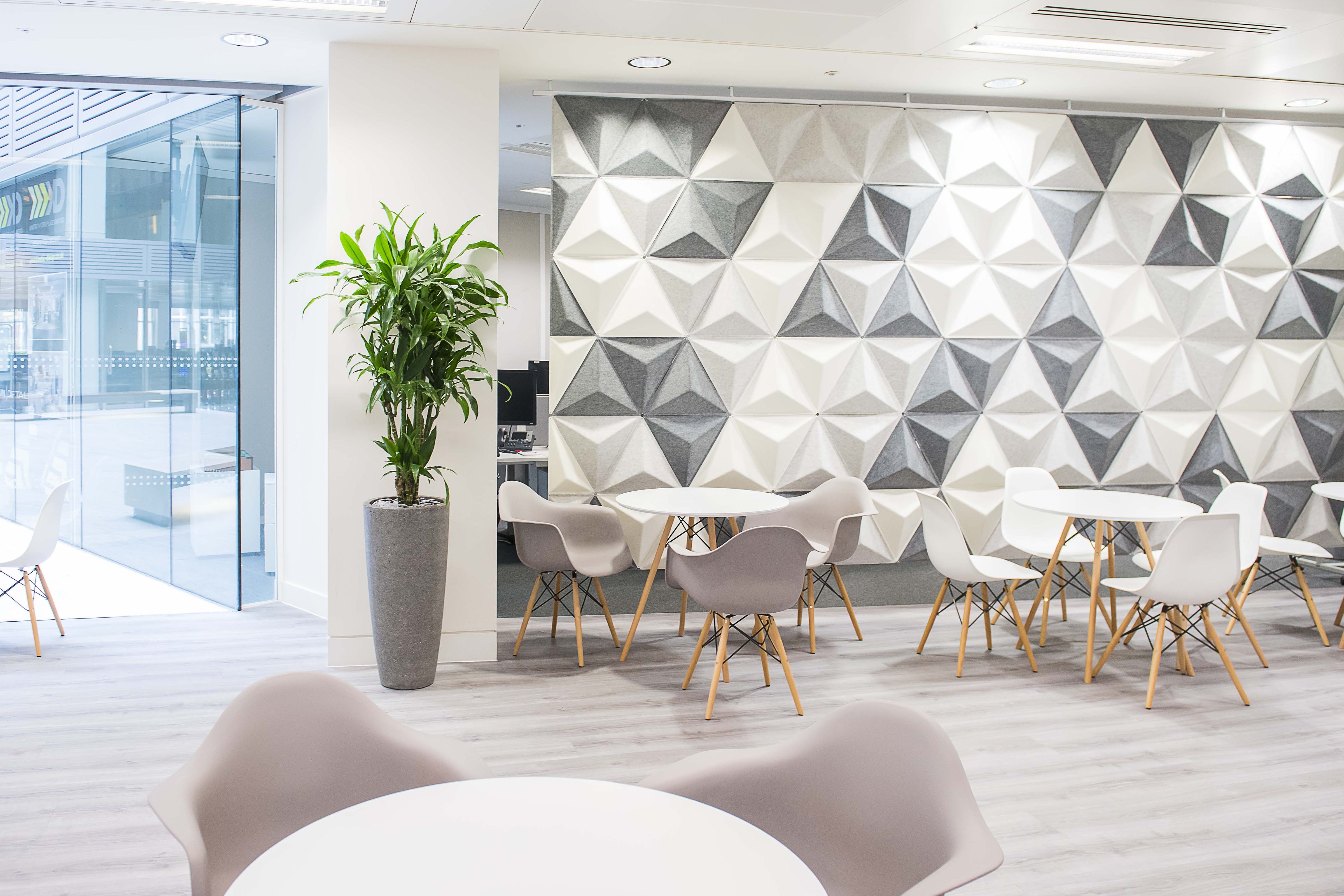
May, 2019
Here at Duraflor, we’re celebrating our 100th blog post. As such, we’d like to talk about a topic so many of our posts have included as an underlying theme – office wellbeing – and how we believe interior design can improve it.
It’s well documented that a quality workspace design can lead to a less stressful and more productive atmosphere. As such, it’s essential that employers take the physical work environment of their staff into consideration. In order to produce their best work, employees need to feel calm and comfortable. Here’s just three ways interior design can improve wellbeing in an office.
1. Colour
As we’ve suggested in one of our previous blogs, certain colours are known to influence productivity and can stimulate positive emotional responses. However, how can they help improve office wellbeing? Well, take orange as an example. It is a happy colour and is believed to stimulate energy within people, ultimately improving mood and alertness. Similarly, yellow makes people feel more optimistic and confident.
Stress, which can have a massive impact on the wellbeing of employees, can also be subdued with soft greens and blues, as they soothe and increase mental concentration. Overall, although colour isn’t a cure for illness, it will help create a well-balanced environment that can have positive effects on employees’ wellbeing. As an interior designer, it is certainly worth considering which colours can have a positive effect on people before making final design choices.
2. Natural light, nature and noise
It’s also a fact that more natural light, and bringing nature into an office, can offer numerous benefits to workers and employers. More than 1/3 of employees say a lack of natural light results in negative emotions in the workplace. Beyond options to open spaces up, so that everyone benefits from windows and skylights; consider adding more mirrors to the office or using a flooring surface like vinyl, which has reflective attributes.
Incorporating natural elements into an office is reported to help employees feel less stressed and more relaxed. A great way of doing this is to introduce plants and use natural materials, or natural looking furnishings and flooring.
Finally, although some noise is to be expected in an office setting, too much of it can produce stress hormones in the body. There is plenty of evidence that too much noise in the office makes people physically ill. To prevent this, consider utilising flooring materials that reduce high levels of sound, carpet tiles certainly help and careful consideration around the placement of furniture.
3. Making work fun
A vital aspect of office wellbeing is collaboration and support. Not everyone is the same, which is why employees should have the opportunity to choose a workspace most suitable for them. This is where activity-based workplace design, can come into it own, as it encourages changing environments based on specific tasks. An interior designer can help employers create zones, which allow staff to work in peace and quiet, as well as areas where they can collaborate and enjoy each other’s company during break times. Not only will this empower employees to make their own decisions, but it’s also likely to lower their stress levels as they can get more work done, ultimately improving their wellbeing.
Wellbeing will continue to be a factor in all aspects of design, so don’t be too surprised if we make a few more references to it in future blogs.